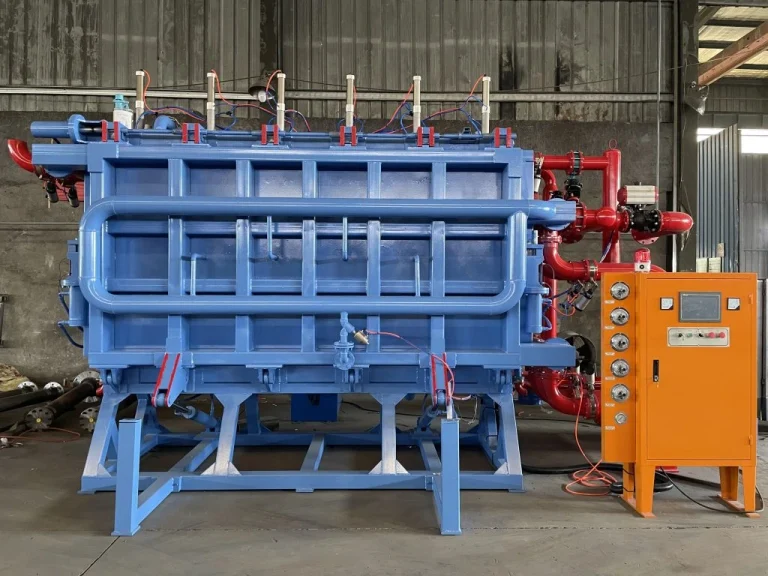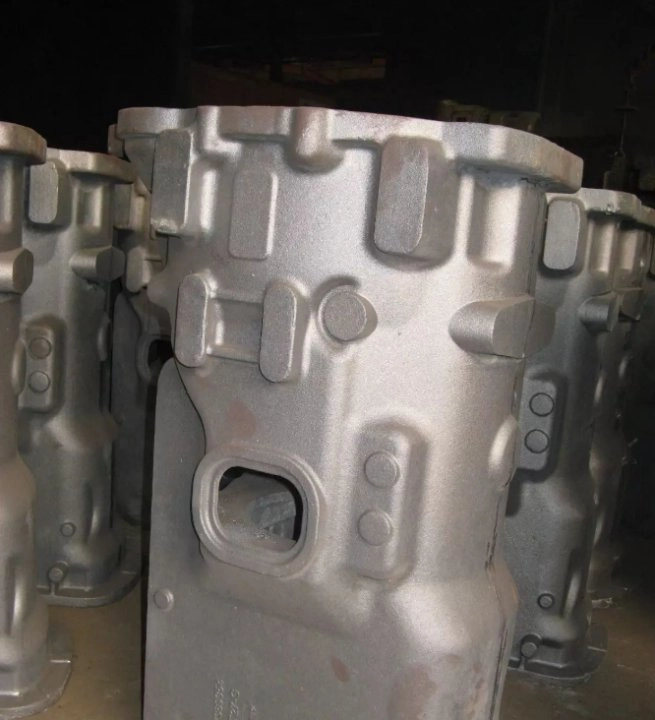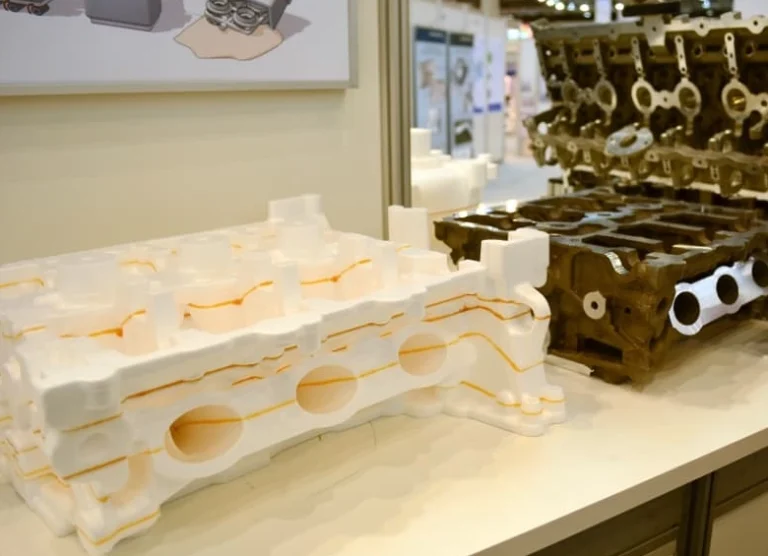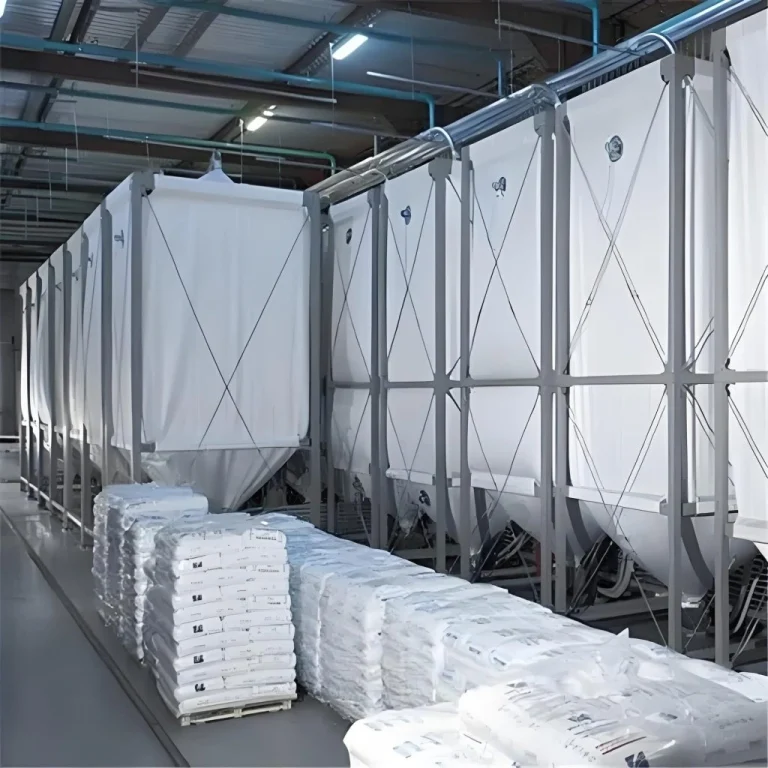What is Lost Foam Casting
Lost foam casting is a smart way to make complex metal parts. It creates shapes with great accuracy. It also wastes very little material. This method uses a foam pattern made of polystyrene. The foam is covered with a special heat-resistant coating. Then, it’s placed in loose sand. When hot metal is poured in, the foam turns to gas. This lets the metal fill the space and form the part. The process has several steps. First, make the foam pattern. Next, coat it with the heat-resistant material. Then, put it in sand. After that, pour in the hot metal to burn away the foam. Let it cool. Finally, take out the finished part. Lost foam casting is used a lot in industries like cars, planes, and heavy machines. It makes things like engine blocks and pipe fittings.
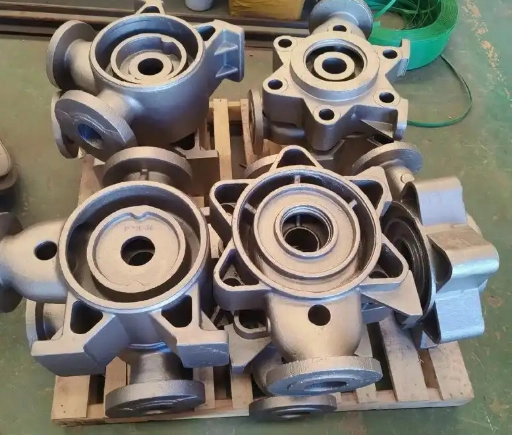
What is Wrinkle Defects
Wrinkle defects are flaws on the surface of cast parts. They’re also called lustrous carbon defects. These show up as wrinkly or shiny spots. People often compare them to “elephant skin,” “alligator skin,” or “crow’s feet.” They happen a lot in cast iron, like ductile iron, because of high carbon levels. These defects make parts look bad. They can also weaken the part’s strength and durability. In bad cases, the part might be rejected completely.
Causes of Wrinkle Defects
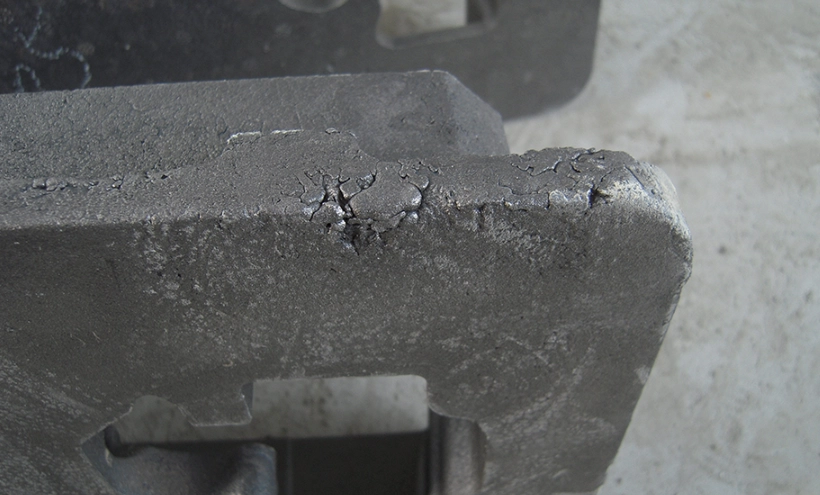
Wrinkle defects come from many causes. They happen when the foam pattern and hot metal interact. Here are the main reasons:
Foam Decomposition and Carbon Residue
When the expanded polystyrene (EPS) foam pattern heats up, it breaks down. It creates gases, liquids, and solid leftovers. The solid bits include shiny carbon deposits. These settle on the part’s surface. They form wrinkly or bead-like flaws.
Pouring Temperature
Low pouring temperatures don’t fully burn away the foam. This leaves carbon bits behind. These bits cause defects. Studies show higher temperatures help burn the foam better. But you need to balance the heat to avoid burns.
Chemical Composition
Some metals, like those with high carbon equivalents (CE) or eutectic saturation factors (Sc), get wrinkles more easily. This is a big issue for ductile iron parts.
Casting Design and Gating System
Thin walls cool fast. This traps foam leftovers and increases defects. Badly designed gating systems cause messy metal flow. This traps residues against mold walls, making defects worse.
Mold Permeability
Molds with low permeability block gas from escaping. This piles up carbon bits on the part’s surface.
Pattern Material
EPS patterns have 92% carbon. STMMA copolymers have only 62% carbon. More carbon means more residue and defect risks.
Negative Pressure
Not enough negative pressure during mold filling slows residue removal. Stronger negative pressure speeds it up. But it needs careful control for best results.
Prevention and Mitigation Strategies
To reduce wrinkle defects, you need to tweak different parts of the lost foam casting process:
Foam Material Selection
Choose STMMA copolymers instead of EPS. They have less carbon. This cuts down on residue and defects.
Optimizing Pouring Temperature
Use higher pouring temperatures. This fully burns the foam pattern. It leaves fewer carbon bits. But don’t use too much heat. That can cause burns.
Casting Design Improvements
Make walls thicker. This helps heat spread better and slows cooling. Good gating systems reduce messy flow. This stops foam bits from getting trapped.
Enhancing Mold Permeability
Use coarse sand with thin coatings. This lets gases escape easier. It lowers the chance of carbon buildup on parts.
Negative Pressure Application
Apply enough negative pressure. This speeds up mold filling. It also helps clear out residues.
Sand Composition Adjustments
Mix fresh and reclaimed sand well. This avoids burns and supports clean castings at higher temperatures.
Using these tips with tools like simulation software or AI defect prediction can cut wrinkle defects a lot.
Advanced Techniques and Future Directions
New tech is making lost foam casting better. One big help is simulation tools. Special software can guess where defects might happen. It also helps set the best process settings. This lets makers spot problems before starting. It cuts waste and makes parts better.
Artificial intelligence is another cool tool. AI, like neural networks or genetic algorithms, improves control. It predicts defects too. By studying big data sets, AI suggests changes to things like pouring temperature, mold permeability, or gating design. This ensures steady results.
New foam materials are coming too. Ones with even less carbon could reduce defects more. These would tackle a main cause of wrinkles—carbon residue from foam breakdown.
Using these new methods promises a bright future for lost foam casting. They bring more accuracy, fewer defects, and better work flow.
Lost Foam Equipments from Hangzhou Ouchen Technology Co., LTD
Hangzhou Ouchen Technology Co., LTD makes top-notch smart equipment for lost foam casting. The company is based in Hangzhou Fuyang District Xindeng Town. This area is a hub for EPS equipment in China. They mix German EPS/EPP tech with their own patents. Their designs focus on automation and saving energy.
One great product is their fully automatic pre-foaming machine. It uses electromagnetic and steam foaming. This keeps barrel temperatures steady. It avoids making “dead beads.” The machine has PLC computer control. It stores settings for easy quality tracking.
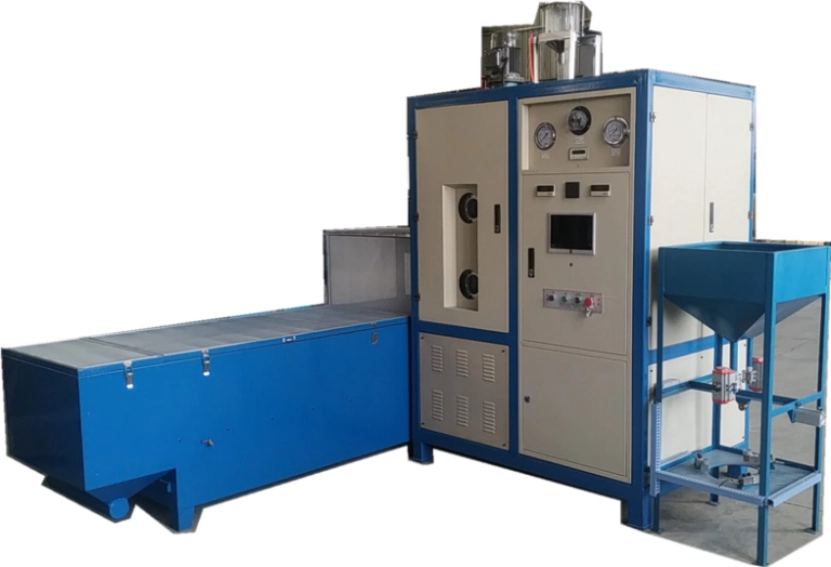
Another cool tool is their vertical PLC hydraulic forming machine. It uses smart ideas like “steam water separation” and “vacuum cooling energy recovery.” This makes production fast and automated. It has a pressurized feeding tank for even bead filling. It also has overpressure safety features.
Their maturation silo is key too. It makes sure new beads mature right. This balances pressure inside and out. It’s vital for strong expansion during molding.
Hangzhou Ouchen also offers a lift-type paint mixer. It’s made of 304 stainless steel. This resists rust and is easy to clean. It uses high-speed motors with variable speed control. This gives great coating results.
FAQ
What causes wrinkle defects in lost foam casting?
Wrinkle defects come from carbon leftovers when foam patterns break down. Things like low pouring temperatures, bad gating systems, poor mold permeability, and high-carbon foam add to the problem.
How can wrinkle defects be prevented?
Use low-carbon foam like STMMA instead of EPS. This cuts residue. Higher pouring temperatures, better gating systems, coarse sand with thin coatings, and negative pressure help too.
What role does pouring temperature play in defect formation?
Low temperatures don’t fully burn the foam. This leaves carbon bits that cause defects. Higher temperatures burn foam better. But balance is needed to avoid burns.
Why is mold permeability important?
Low-permeability molds trap gases. This piles up carbon on part surfaces. Better permeability lets gases escape. It lowers defect risks.
What are some advanced techniques being used to improve lost foam casting?
Simulation tools predict defects and tweak settings. AI optimization refines things like temperature and gating design. New low-carbon foam materials also help reduce defects.

